Fermenting Vegetables (other than Cabbage)
As child already I loved the sour vinegar and the Essiggurken (pickled cucumbers) that we always had at home. I would sneak to the storage room to secretly drink the sour vinegar and take some little cucumbers.
Only now, decates later, I know that pickled is an industrial, easy/cheap way to preserve vegetable, and the process does in no way compare with naturally fermenting vegetables. What I do now is fermenting vegetable, no vinegar and no sugar and no chemical additives whatsoever are involved. Please do not refer to my fermented vegetables as being “pickled”, that is a serious disgrace to them if you would do that.

Fermenting …
Fermenting is the key word. Whilst Pickled contains the “bacteria culture” of the vinegar, my fermented vegetables have each a unique culture that is naturally existing.
I use 5 Liter Glasses as the smallest, and have 8 Liter, 10 Liter and 15 Liter Glasses, for Vegetable Fermentation.
Here you see on the left the fermentation of Garlic in a 5 liter Glass and of Cucumbers on the right in an 8 Liter Glass.
Save Space …
To Save Space in our Kitchen, we cut the plates now in half. It not only saves space, it also makes people eating less.
Can you guess the purpose of these plates that I cut in half?
I give you the answer at the end of this page.
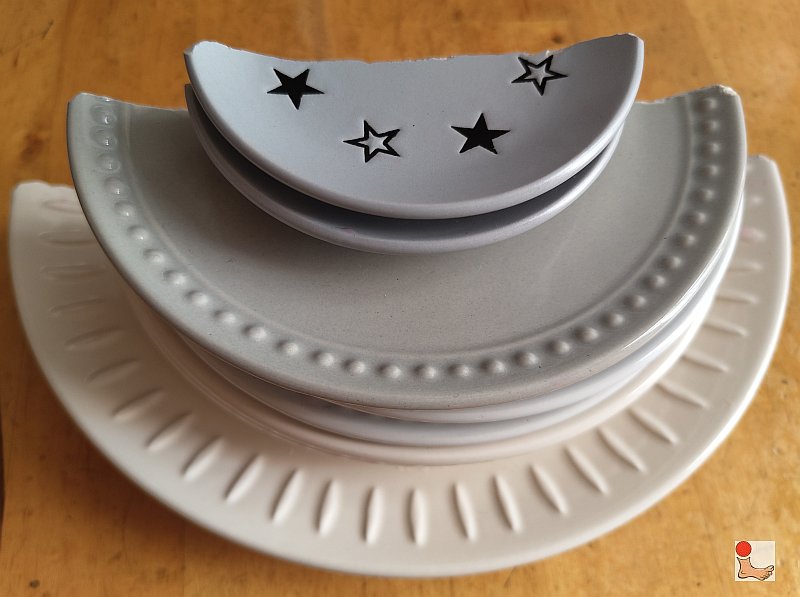
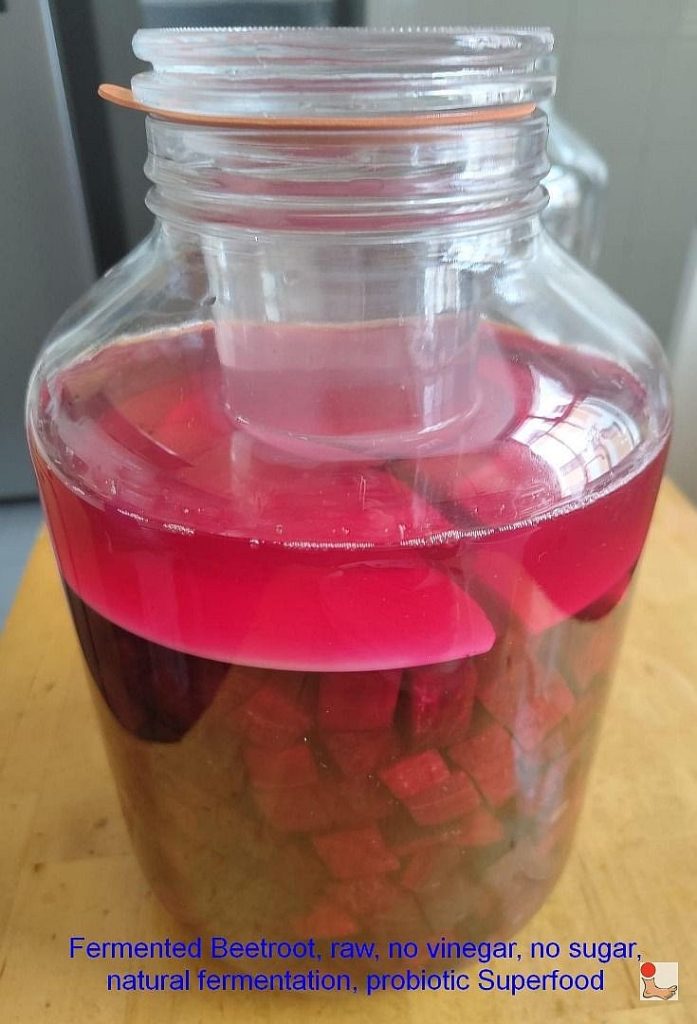
Fermenting Beetroot …
An all-time favorite is the fermented Beetroot. It is a Superfood and ferments nicely. The lactic acid is as sour as from Cucumbers and all the other veggies.
Fermenting Carrots …
These raw Carrots take almost the time of Garlic to ferment, but it is nice. A colorful addition to a Fermented Day Starter Plate.
Have you ever eaten fermented raw carrots?


Fermented Relish …
I did away with these store bought Relish, where I have no idea about the making and the chemicals added, so I did Relish myself.
Ferments nicely, although prone to “getting mushy” if fermented too long due to the cucumbers, which are ready after abt 4 to 5 days fermentation.
Fermented Garlic
Amazingly nice,I eat now 10 pieces of Fermented Garlic a day, just raw out of the glass.
Did you know that most vegetables have all their nutritional values unlocked during a Fermentation? Several components Mother Nature “protects” against our digestion, unless fermented.
Fermented Garlic is also an all-time Favorite of my Friends of Ferments.
But it takes even at the climate of Singapore abt. 2 months to have them in a fermented stage so that it is nice to eat the raw fermented Garlic.

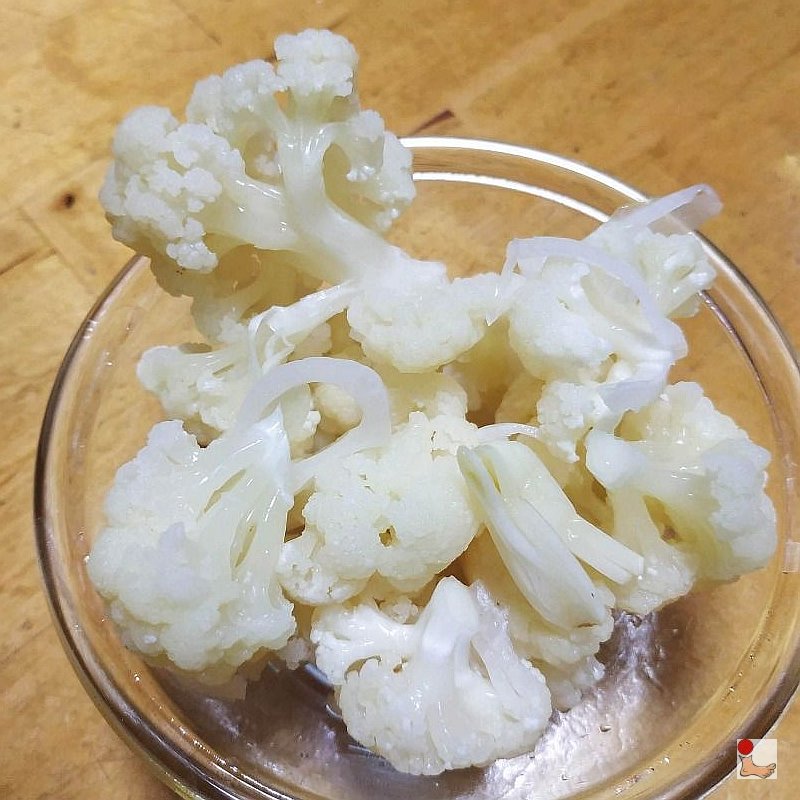
Fermented Cauliflower
A Favorite in our Family, however a bit tricky. Had some failures in fermentation am still working on ways to improve this vegetable fermentation success.
Fermented Beetroot
Raw Beetroot, cut in 15 to 25mm square blocks, ferments nicely and is very nice to eat.
I do not even 100% peel them, just wash nicely and cut off the worst parts, but leave as much as possible “skin” on the cubes.
Beetroot are a true Superfood, just Google for “Health benefits of Beetroot”


Fermented Day Starter
I call a small portion of Ferments “Fermented Day Starter” and this is one variation of such.
Fermented Beetroot, Fermented Cucumber, Fermented Garlic and Feermented Carrots make a truely fabulous plate.
Fermented Day Starter
Here you see how I compile two plates of Fermented Day Starter, with fermented Cucumber, fermented Garlic, fermented Carrots and fermented Cauliflower.
The larger plate is for me, and the smaller for Mona, she also likes the Health Benefits of these Probiotics.
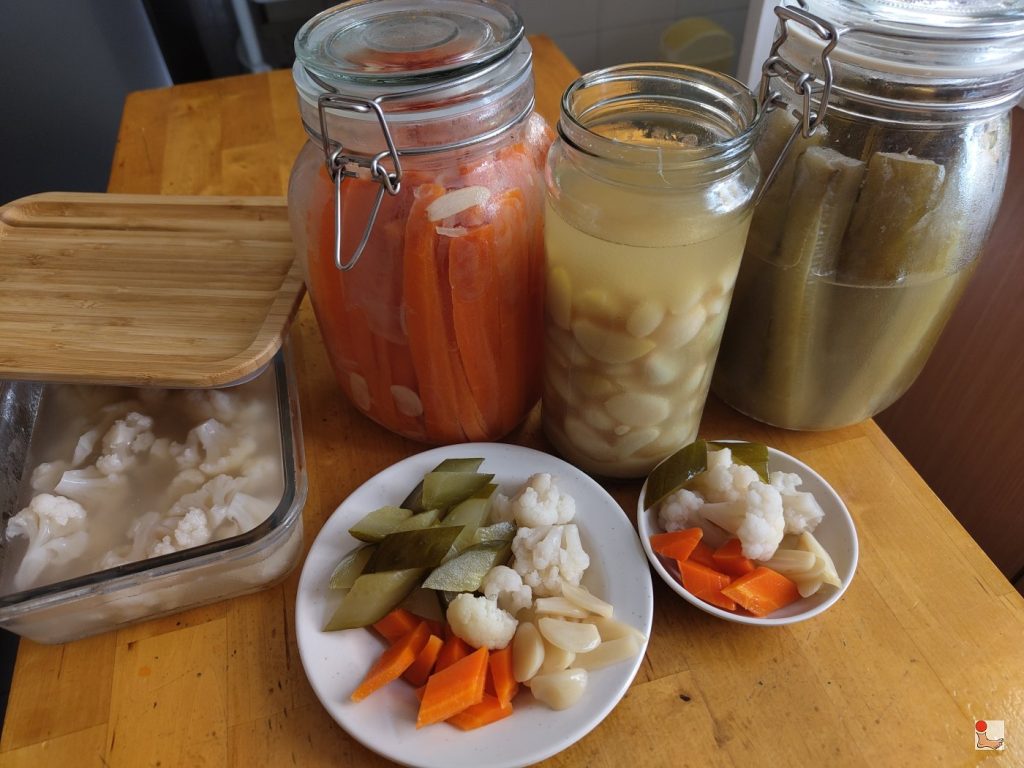
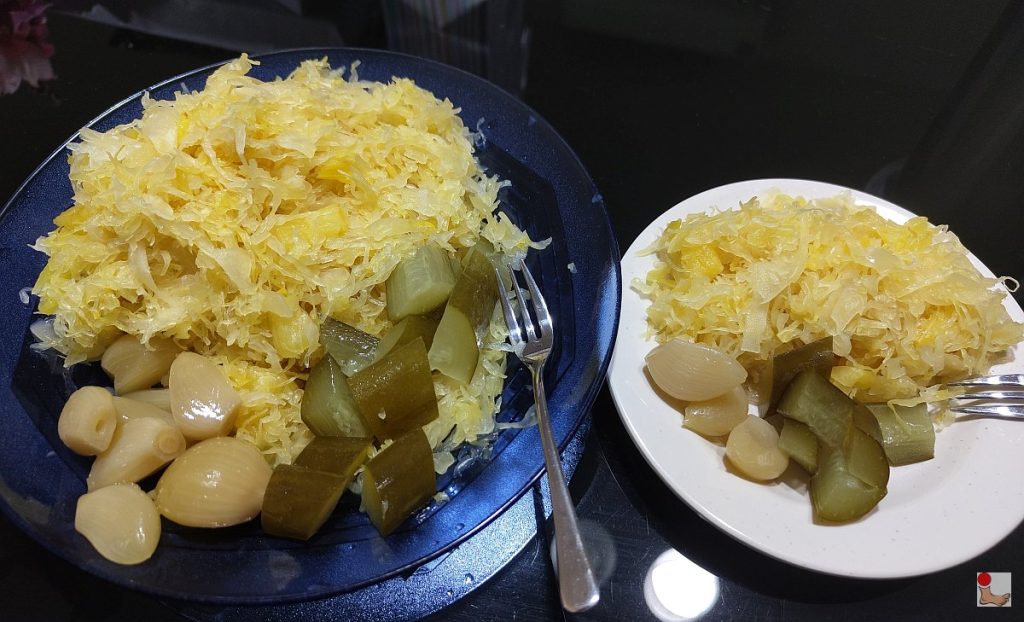
Sauerkraut Combo
This shows you a combinatin of Sauerkraut, fermented Cucumber and fermented Garlic.
A truely very healthy Powerhouse of Probiotics, Vitamins, Enzymes, Minerals and Fibre.
Radish-Carrot
This is a Fermented Day Starter consisting of fermented Radish and fermented Carrots.
Like the Garlic, the Radish loses it’s sharp spiciness during fermentation and is nice to eat raw.
The “Fermented Day Starter” I created as being a daily portion of fermented Vegetables, and we often eat it in the morning with the breakfast.
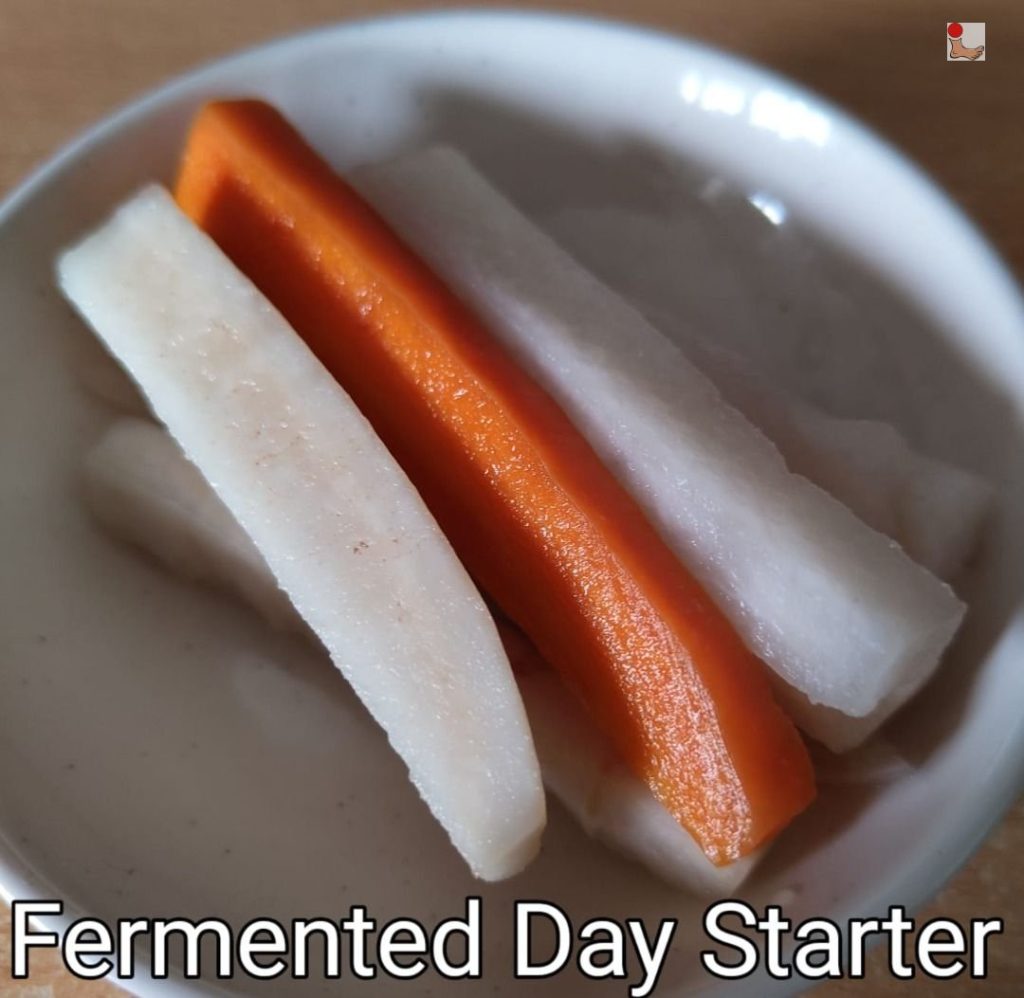

4kg of Carrots
Today (27th Jan 2025) I started the fermentation of 4 kg of raw carrots. Just rinsed, cut in quarters and submerged in a 2.5% brine. This is a 10 liter glass jar and I used 4 liter of brine.
Here you see again the 1/2 cut ceramic plates. These are very useful in the fermentation process. On top of them is a glass filled also with brine to weigh all down.
For all fermentations, whether Sauerkraut, Kombucha or Vegetables, I recommend never to start with “too small” fermentation jars. 5 liter is the absolute minimum, 8 liter is better, and like here, 10 liter is nice.
Albert’s typical Breakfast
As I am sometimes asked, here it is. On the right a cup of instant coffee, with 1/2 teaspoon cinnamon powder, no sugar, no milk. To the left a glass of freshly made Smoothy with fruits and Soy-Milk. In front a plate of fresh fruits. Then 2 soft boiled eggs with Herbs de Provence. Behind is a plate of fermented vegetables. Left with brown content is 1 teaspoon Fenugreek Seeds, soaked over night and behind that a cup of water.
Fruits, Smoothy and Fermented Plate are subject to changes, Fenugreek I eat since Oct 2022 daily.
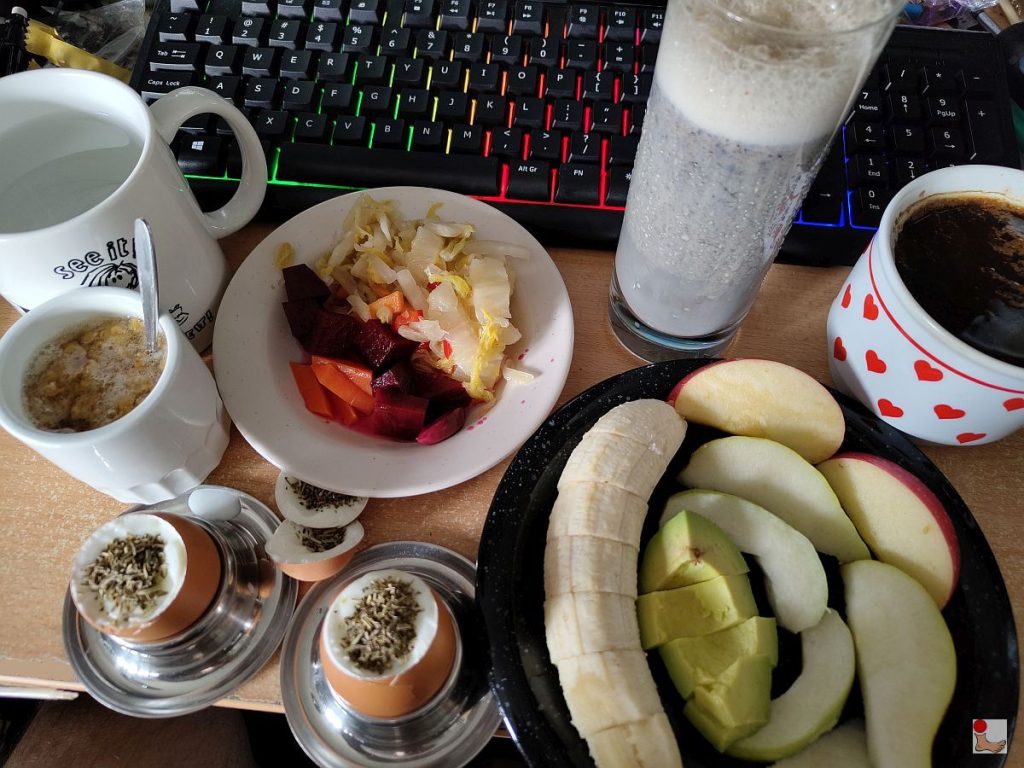

Fermenting Garlic
Today (29th June 2025) is the 7th day that this Garlic Fermentation is active. It is the first time that I used the 15 liter glass jar, and it can take 10 kg of raw Garlic and 3 kg in the 5 liter jar.
Garlic from Lacto-Fermentation is great, and I do eat 8 to 10 pcs of such Garlic daily.
It is also a big favorite of my Friends of Ferments, and the fermentation process takes more than 8 weeks.
Even so the fermentation is in the 7th day and I did not open the jar to check, I can see from the coloring of the Garlic that lactic acid is building, so the fermentation is definitely successful. The brine at this stage is murky and CO2 bubbles are rising.
The blue or green coloring of the Garlic is due to a chemical reaction between sulfur compounds and amino acids, particularly when exposed to acidic brines. This color change is harmless and doesn’t affect the safety or nutritional quality of the garlic.
This time the smell in our place is “a bit overwhelming” but then, we have no Vampires coming to us 😉
Did you know:
When we ferment certain foods, we help increase their health potential .
1. Enhanced Digestion and Nutrient Absorption:
- Improved Digestibility: Fermentation breaks down complex plant compounds, making vegetables easier to digest and allowing the body to absorb more nutrients.
- Increased Nutrient Bioavailability: Fermentation increases the bioavailability of certain nutrients, like vitamins and minerals, making them more readily available for the body to use, lower glycaemic responses and a greater break down of proteins all being cited. More than half of the world populations are affected by micronutrient malnutrition and one third of world’s population suffers from anemia and zinc deficiency, particularly in developing countries. Iron and zinc deficiencies are the major health problems worldwide.
- Removal of Antinutrients: Fermentation reduces the levels of antinutrients (compounds that can interfere with nutrient absorption).
This is because some natural compounds, like phytic acid found in legumes may inhibit our absorption of nutrients like iron and zinc. Fermentation removes these ‘anti-nutrients’, making their nutritional content easier for us to access.
2. Gut Health and Microbiome Support:
- Probiotic Source: Fermented vegetables are a natural source of probiotics (beneficial bacteria) that contribute to a healthy gut microbiome.
- Increased Microbiome Diversity: Consuming fermented vegetables increases the diversity of gut bacteria, which is linked to better overall health.
- Gut Inflammation Reduction: A healthy gut microbiome, supported by fermented foods, can help reduce inflammation in the gut and improve digestive health.
3. Enhanced Nutritional Profile:
- Vitamin Synthesis: Some fermentation processes can lead to the synthesis of new vitamins, such as B vitamins.
- Antioxidant and Anti-inflammatory Properties: Fermentation increases the levels of antioxidants and other beneficial compounds with anti-inflammatory properties.
- Bioactive Compounds: Fermentation can produce bioactive peptides and other compounds that have various health-promoting effects.
- You may Search the Internet for “Health benefits of fermented garlic” or “Health benefits of fermented Beetroot” or of Sauerkraut or whatever. Please do not put “Black Garlic” on the level of my fermented Garlic. That blackening is an Aging Process (60 Degrees Celsius for abt 4 weeks … no live culture may survive that) and does not compare with healthy lactic fermentation that is full of probiotic bacteria cultures.
Now you get an Idea what I do when I talk about fermenting Vegetables. Mona and I consume such ferments on a daily basis.
I also fermented sliced Onions, and I will add the picture when I come across it.
What you buy commercially is usually pickled (eingelegt), what means it is a cheap, fast and easy process just with Vinegar. And the purpose of that is purely the conservation, not the probiotic affect or nutritional benefits. I feel people should get into this own fermentation, for one they know what they eat, and for the other it is much healthier.
Regarding the ceramic plates cut in half: Those who guessed it right, congratulations.
For the others, I cut plates with the outer diameter of the inner diameter of the various jars, so I use the 1/2 plates to hold the vegetables under the brine. You can best see this on the picture of the “Fermenting Beetroot …”, on top is a jam glas filled with water to hold everything down.
With Sauerkraut I have a 100% success rate in fermentation, with Vegetables it varies a bit. I assume a series of failures were the result of buying Pink Himalayian Salt from (Malaysian) sources that added Iodine, and with Iodine in the Salt fermentation doesn’t work.
In addition to be more careful with the Salt source, I am now also keeping a small glass of the brine of a successful fermentation and add it as a “starter” to the next fermentation. I do have a 480 liter fridge only for ferments (incl Kombucha).
If any questions, let me know.


